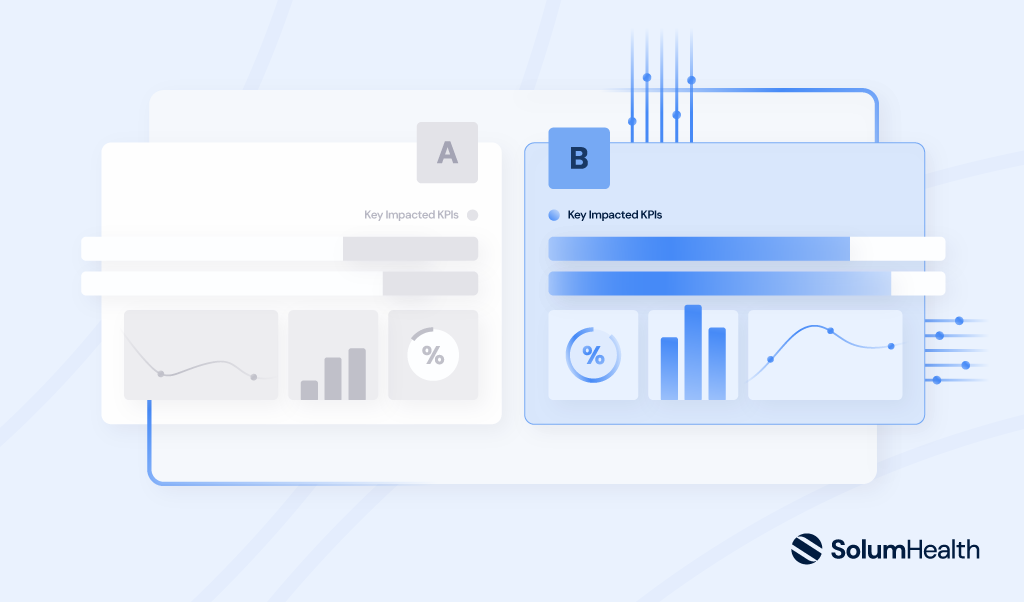You’re not imagining it. Clinic leaders describe the same knot in their stomach: too many messages, not enough hands, and a schedule that slips even when everyone is sprinting. Then another artificial‑intelligence proposal lands, promising to fix it all. You don’t need more promises, you need clarity you can act on, so consider this your field guide.
A clean definition
An AI proposal is a written plan from a technology vendor explaining which parts of your operation it will automate, what data it needs, how it integrates with your core systems, how it protects privacy, what rollout looks like, and how success is measured. In plain terms, it should show how the tool saves time or protects revenue, and do so in a way you can verify.
Why this matters right now
Staffing is tight, margins are thin, and patient expectations aren’t getting lower. AI sits near the top of many leaders’ tech priorities, yet plenty still want clearer proof that workload actually drops and financial returns hit the ledger, that tension is normal. You can respect the potential and insist on evidence, you should.
What a credible AI proposal includes
I look for six anchors, if even one is missing, the rest of the story gets wobbly:
- Problem statement (in operations language). Name the bottlenecks your team feels: delayed authorizations, long hold times, late notes, backlogs that push first visits.
- Solution description (what the system does). Spell out functions such as speech‑to‑text for note drafting, natural language processing for intake summaries, or prediction for no‑show risk.
- Data sources and integrations. Show how the system will read and write with your EHR and practice‑management (PM) system, your phone and messaging platforms, and document/fax workflows.
- Privacy and security details. Include a Business Associate Agreement (BAA), encryption, role‑based access controls, logging, and incident‑response expectations.
- Implementation plan. Milestones, owners, training, and a realistic schedule. Who does what, and when.
- Metrics and projected ROI. Not hand‑waving, measures tied to cost or access so you can compare proposals.
When a proposal hits these marks, you can test claims against your staffing model, payer mix, and actual bottlenecks. That’s the move from pitch to plan.
Budget impact without the fog
I think about cost through two lenses: total cost of ownership (TCO) and return on investment (ROI).
- TCO isn’t just the subscription. It includes implementation time, integration work, training, change management, monitoring, and any usage charges for voice, storage, or messaging.
- ROI is the value back: hours saved, fewer denials, fewer missed charges, faster scheduling and documentation, lower call abandonment. Each can be converted to dollars.
A simple four‑step approach works:
- Map current costs. Hours per week on intake, prior authorization, documentation, phones, and claim rework. Include overtime.
- Quantify delay costs.Missed referral windows, rescheduled evaluations, late notes that block charge capture.
- Model the new run rate. What does process time look like after go‑live, and what do you pay for software and support?
- Calculate payback. How many months to break even if measured savings hold?
Many leaders say small pilots don’t shrink workload right away. Common reasons: narrow deployment or teams still learning. Early friction isn’t failure, it’s a signal to tune workflows, expand the slice of work given to the system, and shorten the path to a win.
Bottom line: an AI proposal should help you do more with the staff you already have. If the math implies you need a second team to supervise the first, keep asking questions.
Compliance and reporting, what doesn’t change and what does
AI doesn’t change your privacy obligations. Your practice, and any partner touching patient data, still needs minimum‑necessary use, access controls, encryption, audit logs, and a signed BAA. That’s table stakes. Expect the vendor to share an AI‑specific risk analysis: likely error modes, fallback plans, and how exceptions route to a human.
Regulators are adding guardrails around automated decision‑making, especially for coverage and utilization. Even when rules target health plans, expectations spill into provider workflows: transparency when a system influences decisions, fairness testing, and auditable logic.
Professional associations echo similar themes: human oversight, bias mitigation, and clarity with patients when automation touches their experience. One more reality worth saying out loud: note generation and summarization can be very good, yet they still require review. Strong drafts may miss details no clinician would. Sign‑off remains human.
Where clinics actually see gains
Results come when specific, repeatable tasks move from people to machines, and stay there without drama. Four domains show consistent value:
- Intake & communications. Systems can parse referral packets, prefill demographics and insurance, summarize histories, and unify calls, texts, email, and portal messages into a single queue. The obvious win: faster onboarding. The quiet win: fewer handoffs that cause errors.
- Scheduling & no‑show prevention. Prediction engines flag which appointments are likely to fall through. Automated reminders with simple self‑service rescheduling reduce phone tag. Staff spend less time chasing and more time filling.
- Documentation. Ambient tools draft notes during visits. Structured prompts nudge more consistent plans of care. Suggested codes help close charts faster. Savings vary by specialty and adoption quality. Review remains essential.
- Revenue cycle & authorization. Eligibility checks, prior‑auth status tracking, and claim scrubs are made for automation. Payoffs show up as fewer denials and steadier cash flow.
Practically, focus proposals where your team spends the most time and where delays ripple into lost access or lost revenue.
A proposal‑reading checklist you can reuse
Keep conversations grounded in work, not hype:
- Use‑case clarity. Targets your biggest bottlenecks? List tasks that move fully to the system vs. those that remain human.
- Workflow mapping. Before/after pictures. Where does the system take over? Where does it hand back? Who clears exceptions?
- Data & integrations. Which systems will it read from and write to: EHR, PM, phones/messaging, fax/document capture, identity? Spell out direction of data flow and any temporary storage.
- Security & privacy. BAA, encryption, logs, role‑based access, incident reporting, and a plain statement about whether your data is used to train models.
- Accuracy & bias. Validation on representative data. Common errors and frequency. How the vendor tests for disparate impact.
- Staffing & change management. Training time by role, super‑user plan, go‑live support hours, and who owns ongoing tuning.
- Metrics & ROI. Baseline, targets, and reporting rhythm for time to intake, response SLAs, time to final note, denial rate, call abandonment, and no‑show rate.
- Governance. Release sign‑off, how quickly you can pause, and the rollback plan.
- Contract structure. Pricing tiers, volume assumptions, implementation fees, renewal terms, and data‑return commitments if you move on.
If a proposal can’t answer these directly, it isn’t ready for a regulated setting.
A pragmatic implementation playbook
The fastest way to learn is to start small, measure well, and expand what works.
- Select one workflow with measurable pain. Intake backlogs, authorization delays, after‑hours charting, or phone queues are common choices.
- Name a cross‑functional owner. Include operations, clinical leadership, IT/EHR, privacy, and revenue cycle.
- Baseline the metric. Examples: time from referral to scheduled evaluation, percent of notes completed the same day, or first‑pass claim rate.
- Run a 6–8 week pilot. Use a limited set of locations or providers. Keep a visible dashboard of metrics and wins.
- Hold a weekly review. Track accuracy and exceptions. Capture staff feedback. Adjust prompts, templates, and routing.
- Decide go/no‑go and scale. If targets are met, expand to adjacent workflows. If not, refine or exit with lessons learned.
Change management tips: keep training brief and visual (short videos beat manuals). Start with low‑risk tasks so early wins build trust. For ambient documentation, begin with straightforward visits. For scheduling, start with reminders before predictive backfill.
EHR integration without the drama
Think of your EHR as the chart room and the AI layer as trained couriers. Couriers fetch, sort, and draft paperwork; they don’t own the record. Clinicians and administrators decide what gets filed and what gets billed.
The usual flow:
- Read: Pull context (appointments, demographics, insurance, prior notes) through approved interfaces.
- Process: Analyze or generate an output (e.g., draft note, intake summary).
- Write: Send structured results back to the EHR/PM or into a task queue for review and sign‑off.
- Log: Record every action so you can see who did what and when.
Integration checkpoints to confirm in any proposal: supported EHR versions/endpoints, identity and access controls, data formats (HL7, FHIR, PDF), error handling for failed write‑backs, and a sandbox plan with test patients and a clean rollback.
Guardrails that make automation trustworthy
Strong guardrails create confidence. Build these into proposals and contracts:
- Human‑in‑the‑loop. Require human sign‑off for notes, codes, and anything touching the plan of care.
- Confidence thresholds. Auto‑approve at high confidence; route low‑confidence items to staff.
- Bias testing. Test for disparities and share mitigation methods.
- Audit logging. Detailed logs support post‑event review and privacy obligations.
- Incident response. Time‑bound commitments for notification, containment, and remediation.
- Kill switch. A reversible way to pause automation without harming data integrity.
- Release governance. Change control for model updates with clinical and operational sign‑off.
The money conversation: TCO, ROI, and tax treatment
Even a brilliant pilot can stall if the numbers aren’t packaged clearly. Finance leaders want clean TCO, achievable ROI, and a sensible accounting view.
TCO checklist:
- Subscriptions and add‑ons (voice minutes, storage, text messaging).
- Implementation and integration labor (internal and external).
- Training time by role and the short‑term productivity dip during ramp‑up.
- Ongoing monitoring and quality sampling, plus any model‑tuning time.
- Exit costs and data export if you switch tools.
ROI framing (four buckets):
- Time to value: months to break even given measured savings.
- Efficiency: hours saved in intake, documentation, authorizations, and phones; regained throughput from fewer delays.
- Revenue protection: cleaner claims, fewer denials, fewer missed charges.
- Patient access & retention: reduced wait times, easier scheduling, fewer no‑shows.
Accounting treatment: Many software subscriptions land in operating expense. Some implementation work may be capitalized depending on scope and policy. Align with your advisor on how your practice treats software, implementation projects, and any development costs. A short memo from finance explaining the chosen treatment prevents surprises at audit time.
Governance and culture that lasts
AI isn’t a one‑time purchase, it’s a capability you operate. Groups that succeed make it part of how they work, not a side project.
- Create a small steering group (operations, clinical, IT, privacy, revenue cycle) that meets monthly.
- Post service‑level targets for intake and communications so staff and patients can see progress.
- Collect edge cases and feedback; refine templates and routing every quarter.
- Designate super‑users and recognize wins that save time or reduce after‑hours work.
- When automation touches patient communication, be transparent, explain that staff oversee it, and make it easy to reach a human.
This is how you move from pilot to a dependable new normal.
Closing thoughts you can use this quarter
Here’s the distilled version I carry in my notebook:
- Focus on workflows, not features. The best proposals replace specific manual steps, and prove it with metrics.
- Measure relentlessly. Baseline, pilot, and scale with a weekly scorecard. Expect a learning curve; demand durable gains.
- Build guardrails from day one. Privacy, human review, bias testing, and a pause button turn promising tools into trustworthy operations.
Keep those three habits close and you’ll choose proposals that let teams work at the top of license and give patients faster access with clearer communication. In a year when every hour matters, that’s how technology earns its keep.

